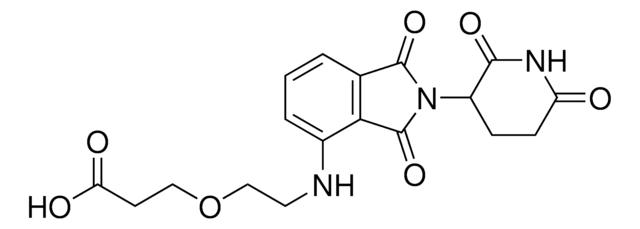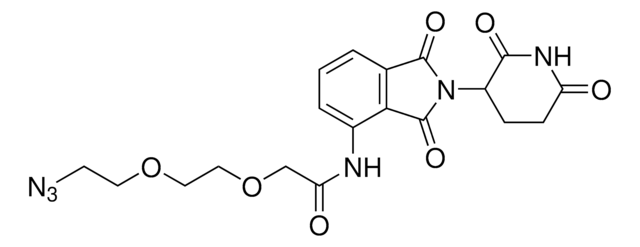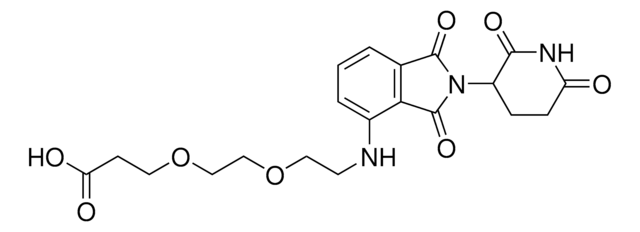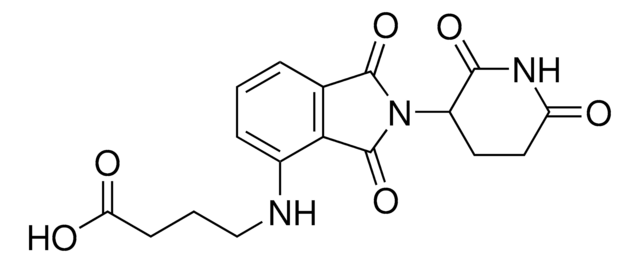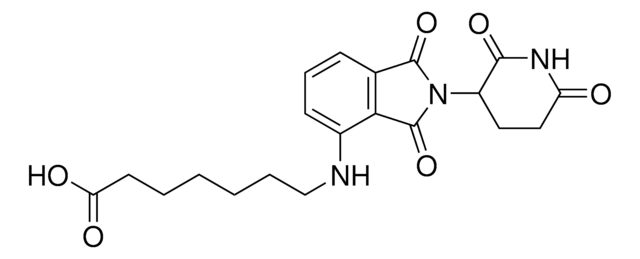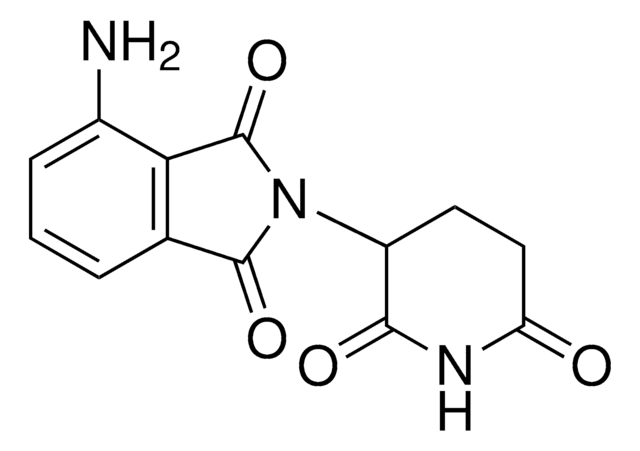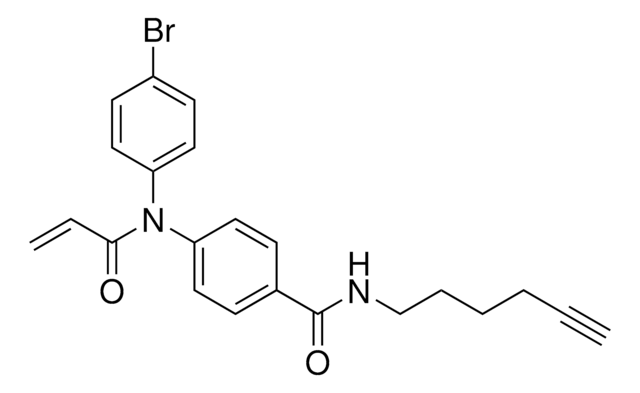910481
Pomalidomide-PEG6-butyl CO2H
≥95%
同義詞:
1-((2-(2,6-Dioxopiperidin-3-yl)-1,3-dioxoisoindolin-4-yl)amino)-1-oxo-3,6,9,12,15,18-hexaoxapentacosan-25-oic acid, Crosslinker–E3 Ligase ligand conjugate, Pomalidomide conjugate, Pomalidomide-2-2-2-2-2-2-6-acid, Protein degrader building block for PROTAC® research, Template for synthesis of targeted protein degrader
About This Item
推薦產品
ligand
pomalidomide
化驗
≥95%
形狀
chunks
反應適用性
reactivity: amine reactive
reagent type: ligand-linker conjugate
官能基
carboxylic acid
儲存溫度
2-8°C
SMILES 字串
O=C(C(CC1)N(C2=O)C(C3=C2C=CC=C3NC(COCCOCCOCCOCCOCCOCCCCCCC(O)=O)=O)=O)NC1=O
應用
其他說明
Portal: Building PROTAC® Degraders for Targeted Protein Degradation
Targeted Protein Degradation by Small Molecules
Small-Molecule PROTACS: New Approaches to Protein Degradation
Targeted Protein Degradation: from Chemical Biology to Drug Discovery
Impact of linker length on the activity of PROTACs
法律資訊
相關產品
儲存類別代碼
13 - Non Combustible Solids
水污染物質分類(WGK)
WGK 3
閃點(°F)
Not applicable
閃點(°C)
Not applicable
文章
Partial PROTACs are a collection of crosslinker-E3 ligand conjugates with a pendant functional group for covalent linkage to a target ligand.
Partial PROTACs are a collection of crosslinker-E3 ligand conjugates with a pendant functional group for covalent linkage to a target ligand.
Partial PROTACs are a collection of crosslinker-E3 ligand conjugates with a pendant functional group for covalent linkage to a target ligand.
Partial PROTACs are a collection of crosslinker-E3 ligand conjugates with a pendant functional group for covalent linkage to a target ligand.
我們的科學家團隊在所有研究領域都有豐富的經驗,包括生命科學、材料科學、化學合成、色譜、分析等.
聯絡技術服務
